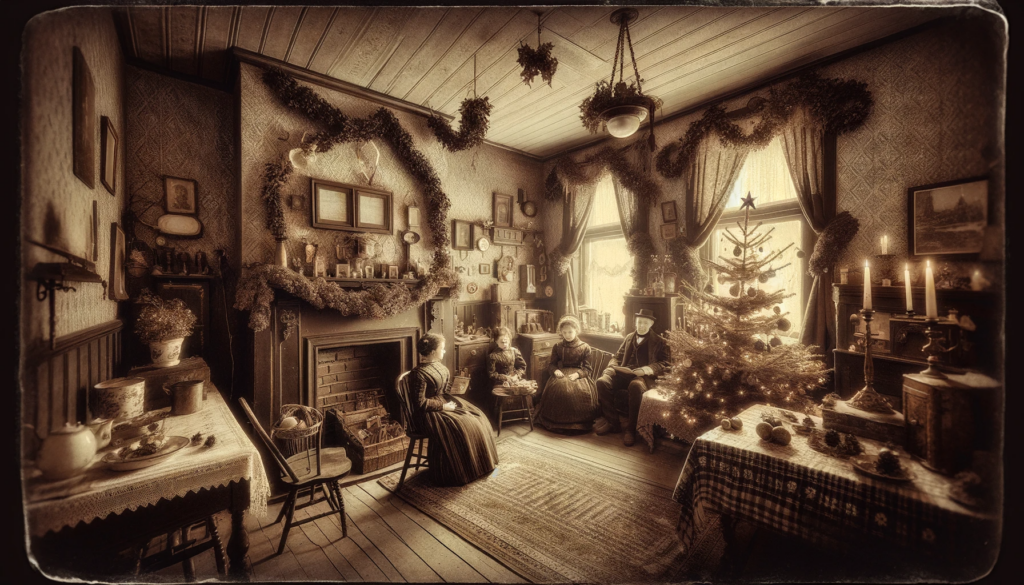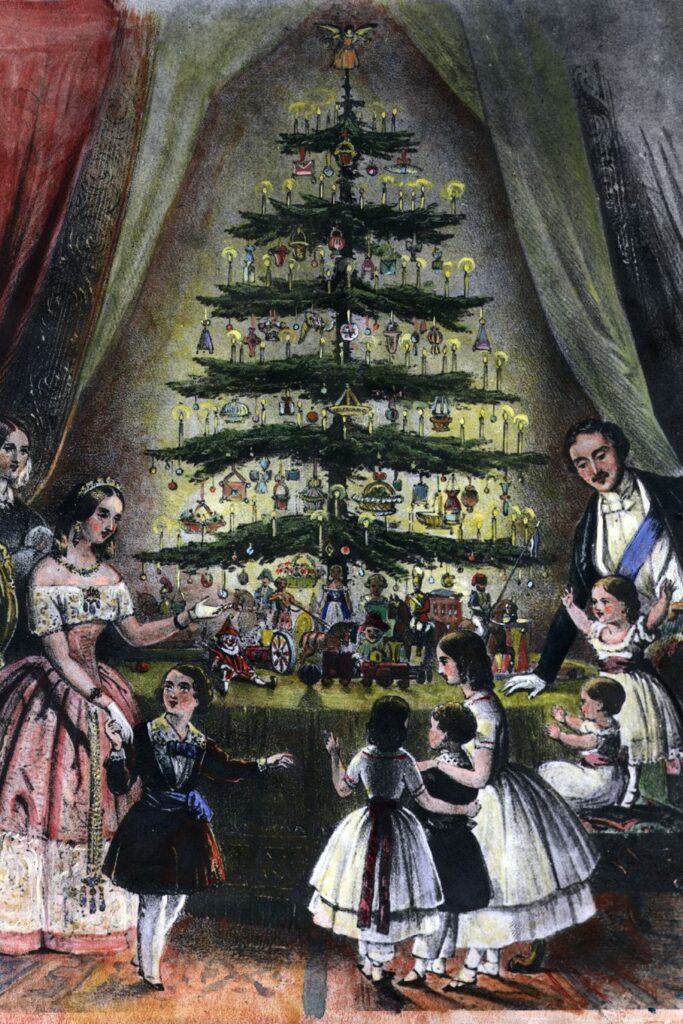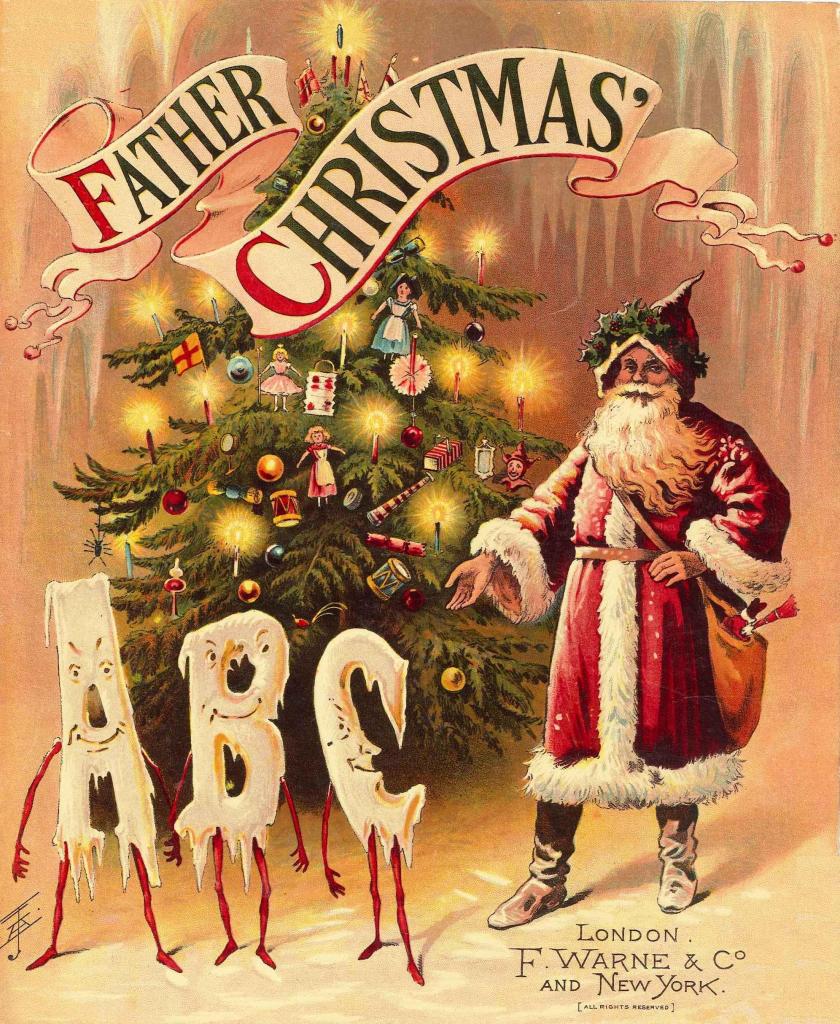The significance of the Victorian era and their impact on the way we operate in modern day society cannot be measured. It was an important era for us all. The Victorians impact on how we celebrate Christmas is fascinating to say the least. No era influenced the way we celebrate Christmas as much as the Victorian era did. Many of the traditions of the Victorian Christmas remain as strong traditions even to this day.

Christmas? What Christmas?
Before the beginning of Queen Victoria’s reign in 1837, Christmas across Britain was not much of a big deal. Many of the Christmas traditions we know today were unheard of in Britain.
Christmas crackers?
Christmas cards?
Santa Claus?
Nope. None of these.
Concepts like Santa Claus and Christmas crackers were unfamiliar, and the sending of Christmas cards was not a common practice. Additionally, most people did not receive time off from work during the Christmas season.
The Introduction of Christmas Holidays:
One of the most significant cultural shifts within the Victorian times was the introduction of the holiday season.
The industrial revolution impacted this greatly as the introduction of wealth and technologies brought about a change. Famous novels including Charles Dickens critically acclaimed ‘A Christmas Carol’ surfaced and pressure was put on the rich to distribute wealth and lifestyle happiness.
The novel promoted the idea of wealth redistribution and the celebration of Christmas. Dickens encouraged affluent Victorians to share their prosperity by giving money and gifts to the less fortunate, a notion initially met with skepticism.
With the wealth and infrastructure delivered by the industrial revolution the middle class were allowed to take Christmas day and boxing day off work.
Couple this with those who had moved into the city for work being allowed to return to the country for the Christmas; there was a significant shift in family, tradition and work life balance ahead.
Why is the day after Christmas called “Boxing Day”?
Boxing day is a holiday celebrated on the second day of Christmastide ( the day after Christmas Day )
The name “boxing day” and its meaning is a mystery to most people who celebrate Christmas, until now.
The name originated from the Victorian era was given to mark the day that servants and working class individuals opened their ‘boxes’ of gifts which they had collected from the rich and middle class.
Where we now use this as a time to see other family members we didn’t visit on Christmas day, this was used for those who worked in the rich households as their downtime and celebration of sorts.
The Giving Of Gifts:
The process of giving and receiving gifts also became prominent within the Victoria era. The exchanging of presents is of ancient origin however at the beginning of the Victorian times this was done to celebrate the new year. This was moved to Christmas day as the significance of this began to grow.
The Victorian era was seen as a time to reward Children with gifts; a celebration and one which was embraced by rich and poor alike. The gifts however differed greatly. At the beginning of the Victorian era the rich would have handmade children toys which were expensive and not readily available due to the handmade nature of the production.
The poor however would focus on stockings commonly filled with fruit and nuts. A tradition we still adopt today too!
With industry came the factories and in turn industrialisation and mass production. This allowed for toys to be more accessible to those other than the elite rich. These were still out of reach for the poor.
The size of the gifts throughout the Victorian era continued to grow with larger more enticing gifts available. Initially gifts would be hung from the tree similar in nature to the small chocolates we hang from the tree today. As the gifts began to increase in size ‘under the tree’ as a place to put these gifts was used.
The Christmas Tree:

The popularity of the Christmas tree throughout the Victorian era typically falls at the feet of Queen Victoria’s husband Prince Albert. Born and raised in Germany, where the decoration of Christmas trees was a tradition long before the Victorian period, Albert made the Christmas tree as important in England as it was in his country of birth Germany.
This began when he brought one to Windsor Castle in the 1840’s. A widely circulated illustration in the Illustrated London News in 1848, showing Queen Victoria, Prince Albert, and their children gathered around a decorated Christmas tree. This tradition is probably one of the most significant ones of modern day Christmas.
Origins of The Christmas Tree
The custom of decorating trees for Christmas is believed to have originated in Germany during the 16th century. It was part of a broader German tradition of bringing greenery into the home during the winter.
The Christmas tree, often an evergreen fir, was seen as a symbol of enduring life and hope in the midst of winter. Decorating the tree with candles, sweets, fruit, and later on, handmade ornaments and small gifts, became a way for families to celebrate the season together.
Christmas Crackers
At the beginning of the Victorian era there was nothing crackers about the Victorian Christmas. That was until Tom Smith came along.
The London sweet maker, after a trip to Paris, had the idea of wrapping his sweets in a twist of fancy paper mimicking bonbons he had seen on his visit to the French capital.
This was the inception of the Christmas cracker as we know it today. Beginning as a humble sweet, as the Victorian era progressed, as did the adaptation of the cracker to the hats and bangs we see of today.
At the end of the Victorian era, the cracker mirrored the same design we have on our tables throughout the Christmas period now.
The Christmas Card
In 1843 the first Christmas card was made. Sir Henry Cole asked an artist to create a Christmas card of which he printed 1000 for sale in his art shop in London. This initial idea seemed to work as the wealthy families began sending out their own cards every Christmas.
It is said that Queen Victoria was a huge fan of the Christmas card and began to have her own children creating and sending their own Christmas cards throughout the period. The popularity of sending cards was helped along with the postal reform in the 1840’s introducing the ‘Penny Post’. Then again in 1870 when a halfpenny postage stamp was introduced. This led to over 11 million cards printed by 1880. This was now a national tradition; one which we still have today.
Victorian Christmas Dinner
Victorian Christmas dinners were a reflection of both social status and regional preferences.
While roast goose was a common centerpiece for many families, the wealthier ones often indulged in beef, venison, and turkey.
These meats were frequently accompanied by rich stuffings like chestnut or veal forcemeat. In Northern England, spiced roast beef was particularly favored.
And if you were royalty…. Queen Victoria herself is noted for enjoying roast swan, a delicacy highlighted in the recipe book of Avis Crocombe, a cook from the 1880s at Audley End.
Some Familiar Vegetables
Vegetables included in the Victorian Christmas meal mirrored that of today, with potatoes, Brussels sprouts, cabbage, parsnips, and carrots being common.
For the affluent, showcasing out-of-season vegetables like asparagus, beans, and tomatoes was a display of their garden staff’s prowess.
The dessert and sweets table was no less lavish. Traditional Twelfth Night cake, Christmas pudding, and mince pies remained staples, along with wassail punch for toasting. Victorians also savored gingerbread, figgy pudding, sugar plums, and nesselrode pudding—a luxurious molded ice pudding made from puréed fruit, cream, and other ingredients. The table was indeed stuffed with lots of tasty Victorian baking.
These culinary traditions, varying by class and region, painted a vivid picture of the Victorian Christmas, blending luxury, celebration, and the showcasing of culinary skills.
